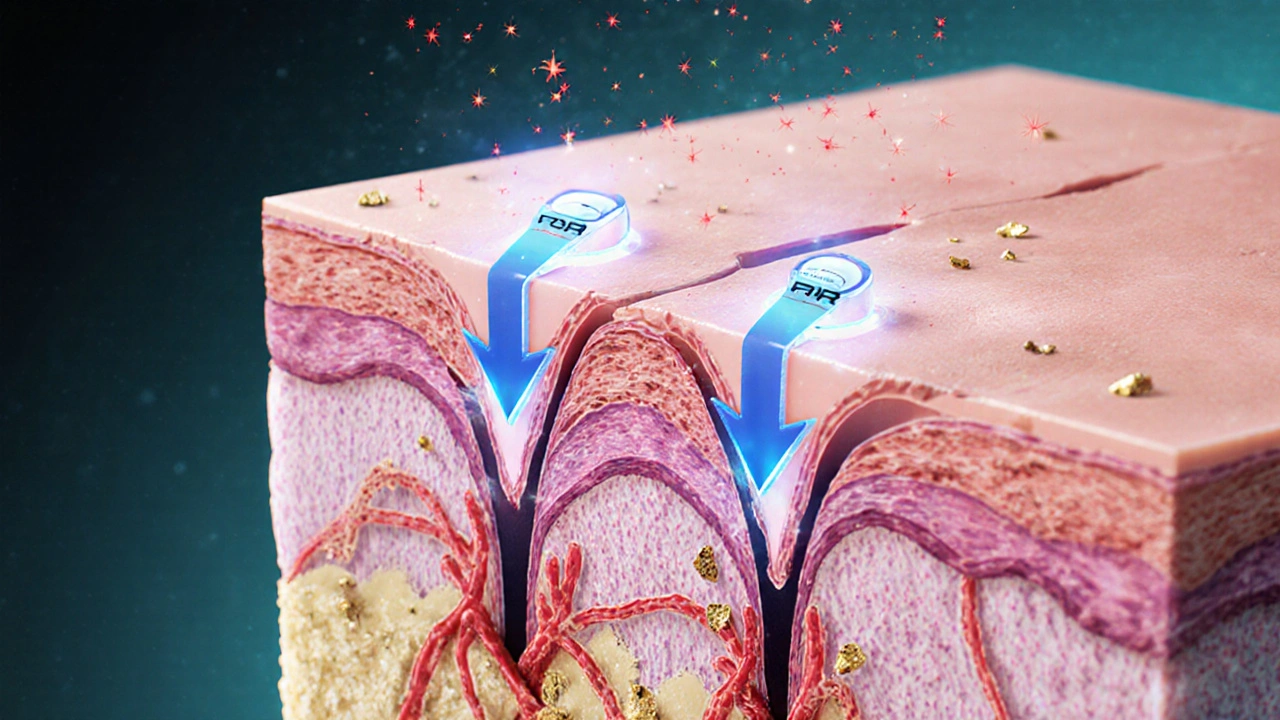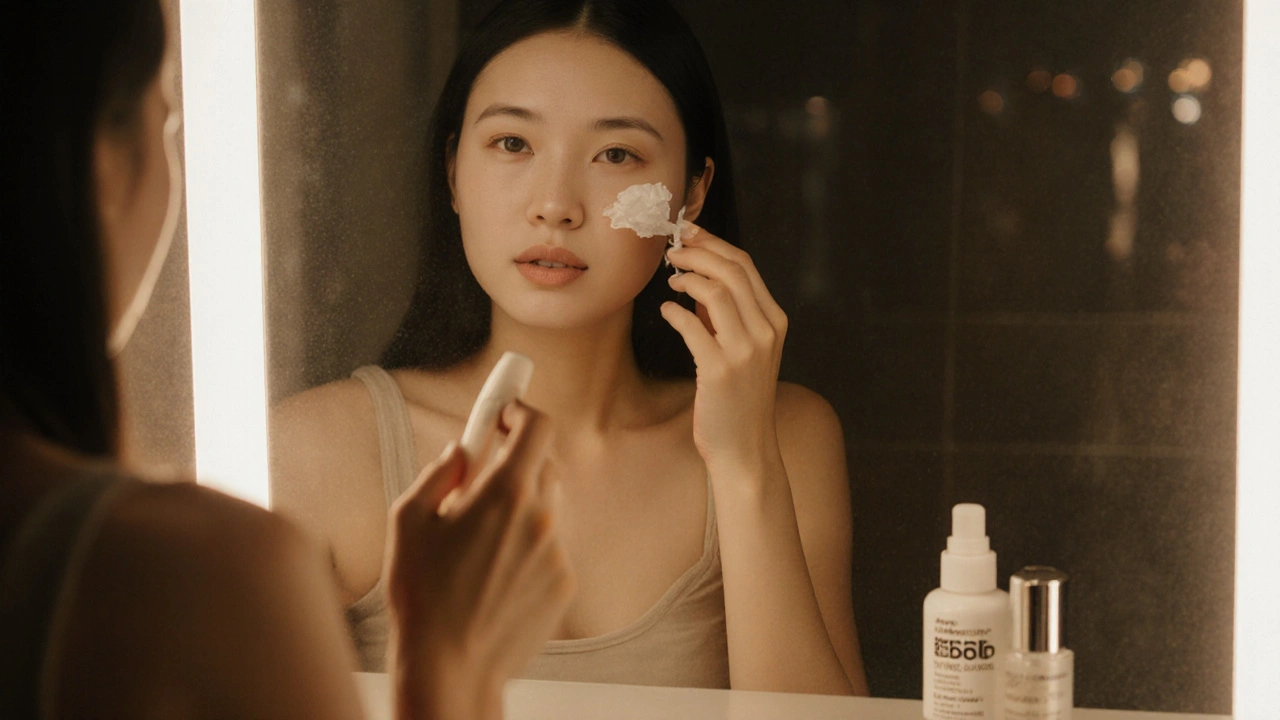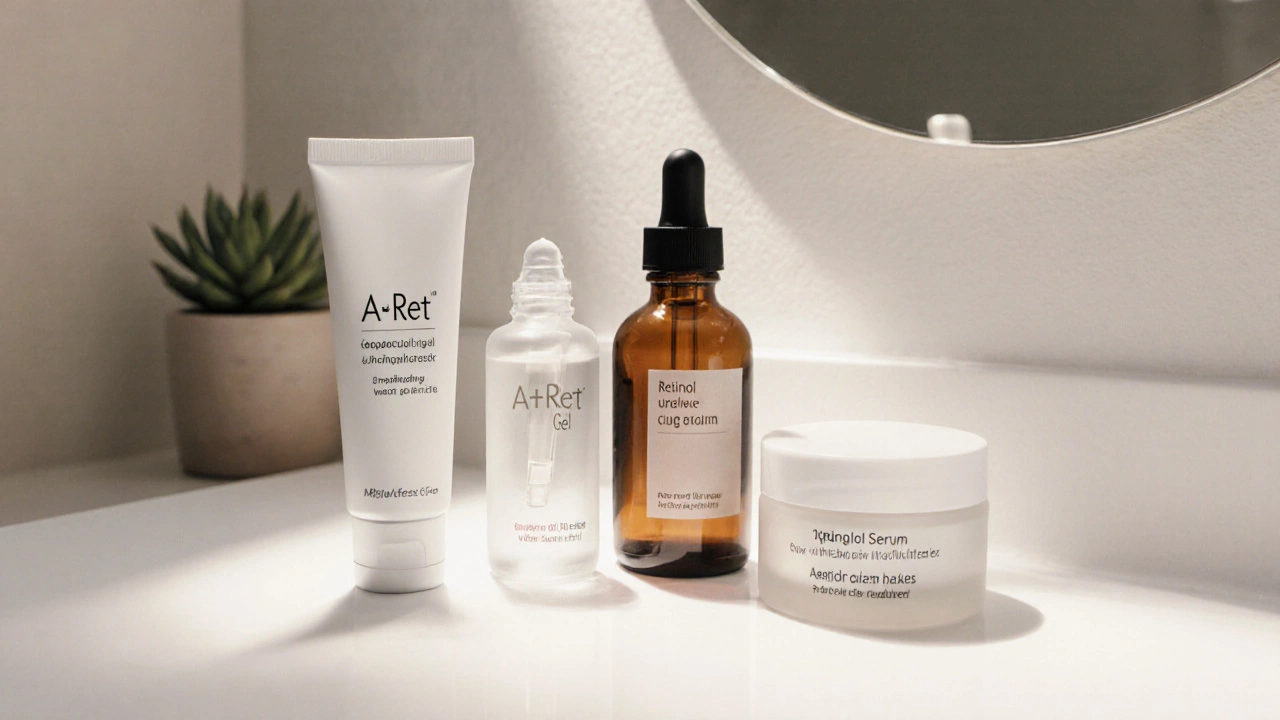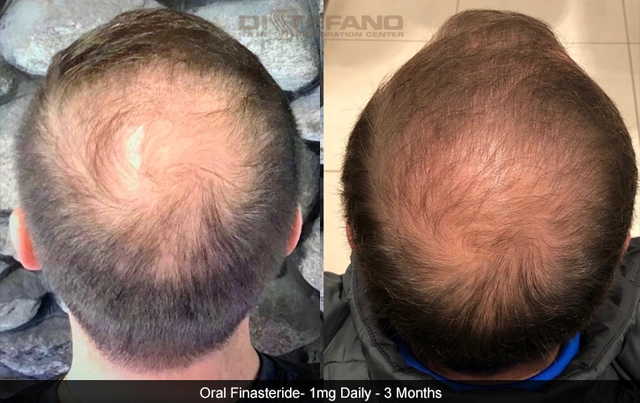Retinoid Comparison Tool
Recommended Retinoid Options
Retinoids are vitamin A derivatives that accelerate skin cell turnover, reduce acne, fade dark spots, and smooth fine lines. They vary in strength, irritation potential, and cost. Start slowly and always use sunscreen!
When it comes to tackling acne, fine lines, or uneven texture, many people wonder whether A-Ret Gel is worth the hype compared to other skin‑care actives. Below you’ll find a straight‑talk guide that maps out the science, costs, side‑effects and real‑world results so you can decide which product fits your routine.
Quick Takeaways
- A-Ret Gel contains 0.025%-0.05% tretinoin, a prescription‑strength retinoid.
- It works faster than over‑the‑counter retinol but brings higher irritation risk.
- Common alternatives (adapalene, retinol, azelaic acid, benzoyl peroxide, salicylic acid) vary in strength, cost and skin‑type suitability.
- Choose based on your primary concern (acne vs aging), skin sensitivity, and budget.
- Proper use (gradual introduction, sunscreen) can minimize side‑effects for any retinoid.
What Is A‑Ret Gel?
A‑Ret Gel is a topical formulation that delivers tretinoin, the active ingredient first approved by the FDA in 1971 for acne treatment. In Australia, A‑Ret Gel is prescribed in concentrations of 0.025% (for sensitive skin) and 0.05% (for moderate to severe acne). It belongs to the retinoid family, which are vitamin‑A derivatives that accelerate skin cell turnover.

How Does Tretinoin Work?
Tretinoin binds to retinoic acid receptors (RAR‑α, RAR‑β, RAR‑γ) in the epidermis. This triggers three main actions:
- Cell turnover: Old, clogged cells shed faster, opening pores.
- Collagen synthesis: New collagen fibers form, smoothing fine lines.
- Pigment regulation: Melanocyte activity normalises, fading dark spots.
Because it works at a molecular level, clinical improvements typically appear after 4-8 weeks of consistent use. However, the same potency also means irritation, dryness and photosensitivity are common, especially during the first two months.
Main Alternatives to A‑Ret Gel
Below are the most frequently compared actives. Each has a distinct profile that may suit different skin types or concerns.
- Adapalene - a third‑generation retinoid (0.1% gel, OTC in Australia) that’s gentler on the skin but slightly less effective for fine‑line reduction.
- Retinol - an over‑the‑counter vitamin‑A derivative that the skin must convert to tretinoin, resulting in slower, milder results.
- Azelaic Acid - a dicarboxylic acid (15%-20% cream) that tackles acne and hyperpigmentation without the classic retinoid irritation.
- Benzoyl Peroxide - a potent antibacterial that clears acne quickly but can be drying and cause bleaching of fabrics.
- Salicylic Acid - a beta‑hydroxy acid (BHA) that exfoliates inside pores, ideal for oily or congested skin.
Side‑Effect Profile Comparison
Understanding irritation risk helps you set realistic expectations.
| Active Ingredient | Typical Concentration | Primary Use | Onset of Results | Common Irritation | Average Monthly Cost (AU$) |
|---|---|---|---|---|---|
| Tretinoin (A‑Ret Gel) | 0.025%-0.05% | Acne, anti‑aging | 4-8 weeks | Dryness, peeling, erythema | ~$35 (prescription) |
| Adapalene | 0.1% | Acne, mild anti‑aging | 6-10 weeks | Mild irritation, less peeling | ~$20 (OTC) |
| Retinol | 0.3%-1% (in serums) | Anti‑aging, texture | 8-12 weeks | Low‑to‑moderate dryness | ~$30-$45 (cosmetic) |
| Azelaic Acid | 15%-20% | Acne, hyperpigmentation | 4-6 weeks | Tickling, mild redness | ~$25 (prescription/OTC) |
| Benzoyl Peroxide | 2.5%-5% | Inflammatory acne | 1-2 weeks | Dryness, bleaching | ~$15 (OTC) |
| Salicylic Acid | 0.5%-2% | Blackheads, oily skin | 2-4 weeks | Dryness, mild stinging | ~$12 (OTC) |

How to Choose the Right Option
Ask yourself these three questions before picking a product:
- What’s my main skin concern? If acne is the priority, tretinoin or adapalene are top choices. For fine lines, retinol or tretinoin win.
- How sensitive is my skin? Sensitive skin often benefits from adapalene (0.1%) or azelaic acid before moving up to tretinoin.
- What’s my budget and prescription willingness? OTC alternatives (adapalene, retinol) cost less and don’t require a doctor's visit, whereas tretinoin needs a script.
For most beginners, a low‑strength tretinoin (0.025%) or adapalene is a safe starting point. After 6-8 weeks, you can assess tolerance and decide whether to up‑dose or switch to a stronger retinoid.
Using A‑Ret Gel Safely
Even if you’re experienced with retinoids, following a consistent routine minimizes side‑effects.
- Start slow: Apply a pea‑size amount every third night for the first two weeks.
- Moisturise first: Use a barrier‑repair cream (e.g., ceramide‑rich) 15 minutes before applying the gel.
- Sun protection is non‑negotiable: SPF 30+ broad‑spectrum daily, reapply every 2hours outdoors.
- Avoid mixing with harsh actives: Skip benzoyl peroxide or high‑strength AHAs in the same routine.
- Watch for warning signs: Persistent redness, burning, or blistering warrants a doctor’s visit.
Frequently Asked Questions
Can I buy A‑Ret Gel without a prescription?
In Australia, A‑Ret Gel is classified as a prescription‑only medication. You’ll need a doctor’s script, which can often be obtained after a brief skin‑assessment visit.
How does A‑Ret Gel differ from over‑the‑counter retinol?
Tretinoin is the active form of vitaminA, so it works immediately at the cellular level. Retinol must first convert to tretinoin in the skin, which makes it slower and less potent, but also gentler.
Is adapalene a good starter if I’m new to retinoids?
Yes. Adapalene’s 0.1% formulation is designed for lower irritation while still delivering clear‑skin benefits. Many dermatologists recommend it before moving to tretinoin.
Can I use A‑Ret Gel on my neck and décolletage?
Absolutely, but start with a very thin layer and monitor tolerance. The skin on the neck is thinner, so you may need to reduce frequency.
What should I do if I experience severe peeling?
Pause the retinoid for a few days, increase moisturiser usage, and re‑introduce at a lower frequency (e.g., once weekly). If peeling persists beyond a week, see a dermatologist.
Whether you end up with A‑Ret Gel, adapalene, or a gentler alternative, the key is consistency, patience, and sun protection. Choose the option that matches your skin’s current tolerance, and you’ll see clearer, smoother skin over time.



Nick Gulliver
10 October / 2025Another “miracle” retinoid hype, but I’d rather stick with good ol’ American skincare that doesn’t turn my face into a desert. The A‑Ret hype train forgets that most of us aren’t looking for a lab‑rat experiment.